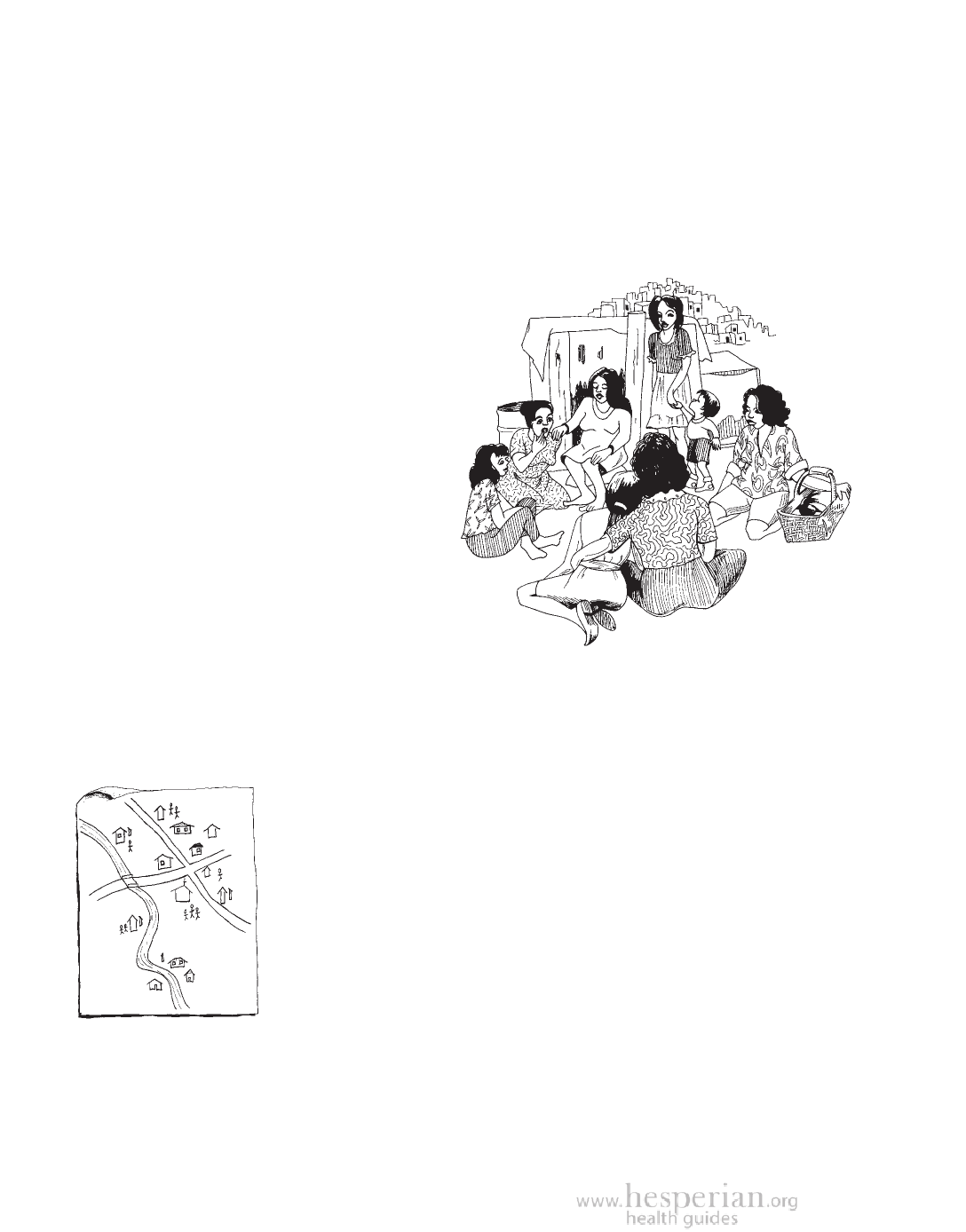
68 Protec ting Communit y Water
Raise Community Awareness
A woman who carries water long distances every day does not need to be told
it is hard work. But she may not feel she has the power to change that.
When people see the need for a reliable and safe water supply as a problem
shared by all, they can begin to work together to make
changes. Often the first stage in making
changes involves a group of people raising
community awareness together.
Talk to the people in charge of the water
Is there a person, group, or business
responsible for wells, pipes, or other
water supply systems? Is there a
person or group responsible for
sanitation? Which people or groups
most often collect, carry, treat, and
store the water?
Together with the people
responsible for the water, list all the
water sources in the area. What do
people say about drinking water quality
and quantity? How much water is used every
day? Are different sources used for drinking, cooking,
bathing, watering livestock, farming, and other needs? Is there
enough water for all these needs? Is there a water source or water storage for
emergencies?
Visit the places where people collect water
Different kinds of water sources can have different problems
and different solutions. Visit springs, wells, sources of surface
water (rivers, streams, lakes, and ponds), and rainwater
catchment sites. At each water source, start a discussion
about how this water is used and whether anyone suspects it
is contaminated (not safe).
Make a map of local water sources and sources of contamination
Your map can show where the water sources are in relation
to people’s homes and to sources of contamination. Use
different colors to show safe water sources and contaminated
sources.
A Community Guide to Environmental Health 2012